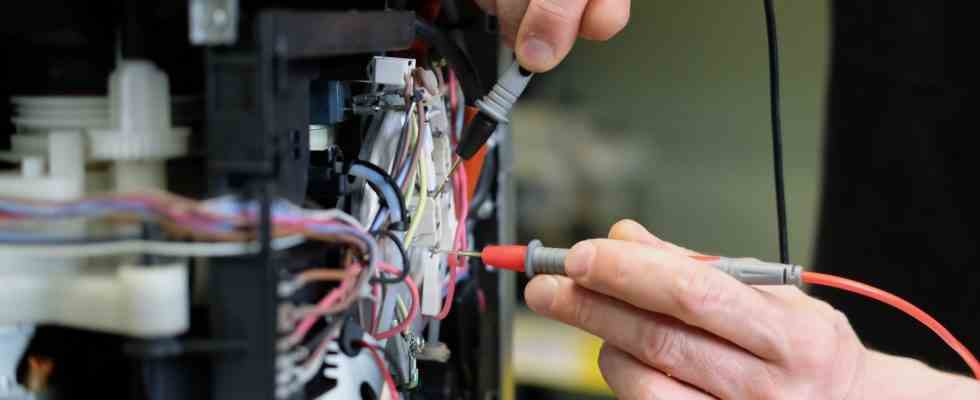FAQ
As of: 03/22/2023 9:55 p.m
A right to repair should benefit the environment – and help consumers save money. The EU Commission has now submitted a proposal as to what that could look like. Which devices does it affect – and how is it supposed to work?
The EU Commission wants to introduce a right to repairs. Consumers should be able to have defective “consumer goods”, such as household appliances or home electronics, repaired more easily instead of buying new ones.
What products are you talking about?
Many many. The EU Commission cites washing machines and dishwashers, televisions, tablets, smartphones and dryers as examples. In general, it says: “The proposal applies to consumables.” This means “movable physical objects”. In addition, all defects in such goods should be covered, regardless of whether they are still subject to the statutory warranty or not. It should also be possible to repair self-inflicted damage.
What is the aim of the planned rules?
Consumers should be empowered and the environment protected. Getting things fixed should be easier and cheaper than replacing them. For products that fall under this EU law, buyers should be able to request repairs from manufacturers for around five to ten years – i.e. even after the statutory guarantee has expired.
According to the EU Commission, many goods are thrown away even though they can still be repaired. The result is 35 million tons of waste in the EU, 30 million tons of wasted resources and 261 million tons of greenhouse gas emissions every year.
With the right to repair, an estimated 18.5 million tons of greenhouse gas emissions, 1.8 million tons of resources and three million tons of waste are to be saved over 15 years.
When do the regulations apply?
That’s not certain yet – the proposal is still at an early stage. First the European Parliament and the EU states have to agree on what the rules should look like in concrete terms. This process usually takes several months. There is no deadline by which the negotiations must be concluded. There may still be changes.
What are the limits to repairs?
For example, if a mobile phone is so badly damaged that repairing it does not make economic sense, it does not need to be repaired. Literally, the Commission says: “As part of the legal guarantee, sellers will have to offer repairs, unless these are more expensive than the replacement.” As a rule, a statutory guarantee of two years applies.
Where can I have devices repaired?
On the one hand, the manufacturers have an obligation – but they can also commission service providers to carry out the repairs. In addition, independent workshops should be allowed to operate.
In addition, national online platforms are envisaged where citizens can find out about repair services and sellers of refurbished goods.
What are the specific effects for Germany?
If the rules come into force as planned, they would also have to be implemented by Germany. A year ago, Environment and Consumer Protection Minister Steffi Lemke announced a similar project.
However, according to the Federal Association of Consumer Centers, not much has happened since then. There are no concrete plans for Lemke’s plans. Consumer advocates are therefore now hoping that the EU Commission’s plans could bring more movement into the subject.
How is the German economy reacting?
“Many companies face major challenges with the proposed ‘right to repair’,” said Peter Adrian, President of the German Chamber of Industry and Commerce. If, for example, spare parts have to be stored longer and repairs have to be carried out within 15 days, this means additional logistical and financial burdens. “Many companies are currently operationally unable to implement the right to repair in practice.”
The managing director of the digital association Bitkom, Bernhard Rohleder, explained that a certified right to repairs could make devices more durable, but was not enough. Similar to Adrian, Bitkom calls for more incentives for companies: “A reduction in VAT on spare parts and repair services for IT hardware such as smartphones and laptops would be such an incentive.”

